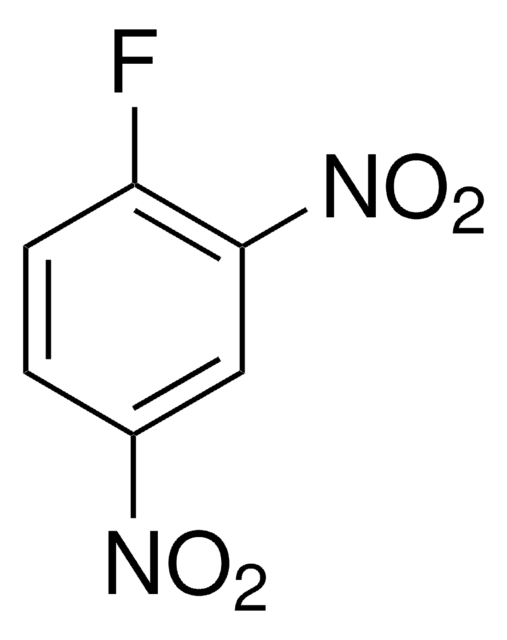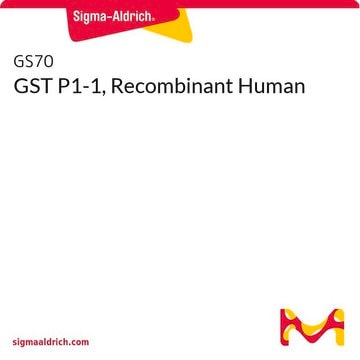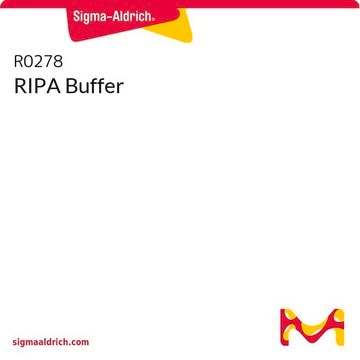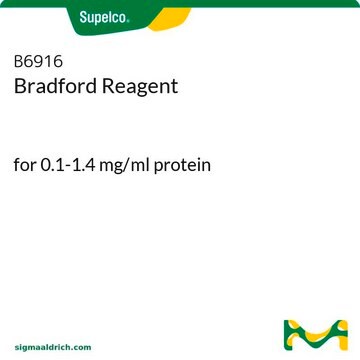138630
1-Chloro-2,4-dinitrobenzene
97%
Sinónimos:
2,4-Dinitrochlorobenzene, CDNB, DNCB
Seleccione un Tamaño
99,80 €
Seleccione un Tamaño
About This Item
99,80 €
Productos recomendados
Nivel de calidad
Ensayo
97%
Formulario
solid
lim. expl.
22 %
bp
315 °C (lit.)
mp
48-50 °C (lit.)
solubilidad
alcohol: soluble (hot)
alcohol: very slightly soluble (cold)
benzene: soluble
carbon disulfide: soluble
diethyl ether: soluble
water: insoluble
grupo funcional
chloro
nitro
cadena SMILES
[O-][N+](=O)c1ccc(Cl)c(c1)[N+]([O-])=O
InChI
1S/C6H3ClN2O4/c7-5-2-1-4(8(10)11)3-6(5)9(12)13/h1-3H
Clave InChI
VYZAHLCBVHPDDF-UHFFFAOYSA-N
¿Está buscando productos similares? Visita Guía de comparación de productos
Categorías relacionadas
Aplicación
Acciones bioquímicas o fisiológicas
Nota de preparación
Palabra de señalización
Danger
Frases de peligro
Consejos de prudencia
Clasificaciones de peligro
Acute Tox. 2 Dermal - Acute Tox. 4 Oral - Aquatic Acute 1 - Aquatic Chronic 1 - Eye Dam. 1 - Skin Irrit. 2 - Skin Sens. 1
Código de clase de almacenamiento
6.1A - Combustible acute toxic Cat. 1 and 2 / very toxic hazardous materials
Clase de riesgo para el agua (WGK)
WGK 2
Punto de inflamabilidad (°F)
381.2 °F - closed cup
Punto de inflamabilidad (°C)
194 °C - closed cup
Equipo de protección personal
Eyeshields, Faceshields, Gloves, type P2 (EN 143) respirator cartridges
Elija entre una de las versiones más recientes:
¿Ya tiene este producto?
Encuentre la documentación para los productos que ha comprado recientemente en la Biblioteca de documentos.
Los clientes también vieron
Filtros activos
Nuestro equipo de científicos tiene experiencia en todas las áreas de investigación: Ciencias de la vida, Ciencia de los materiales, Síntesis química, Cromatografía, Analítica y muchas otras.
Póngase en contacto con el Servicio técnico












